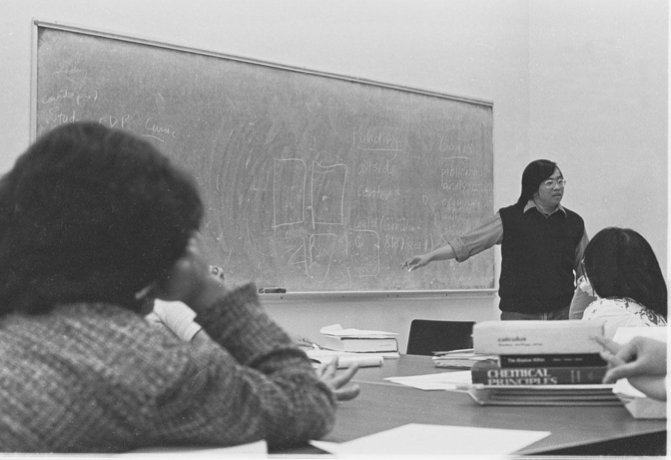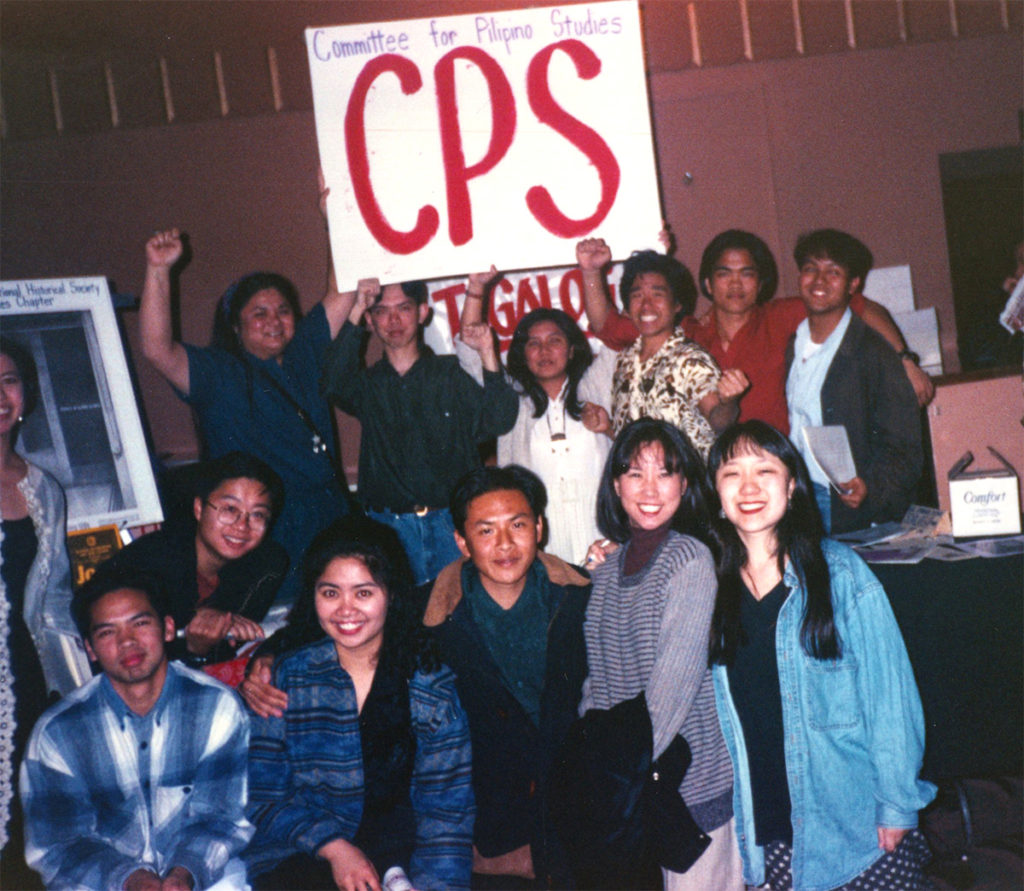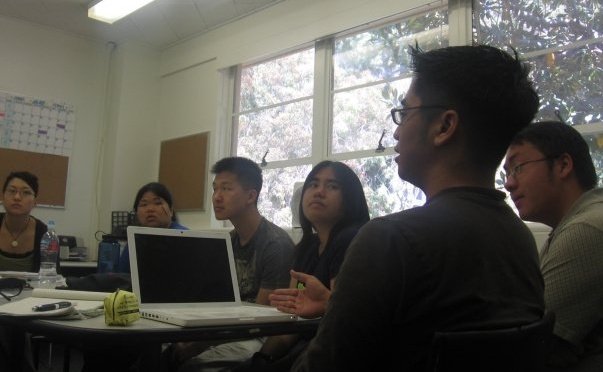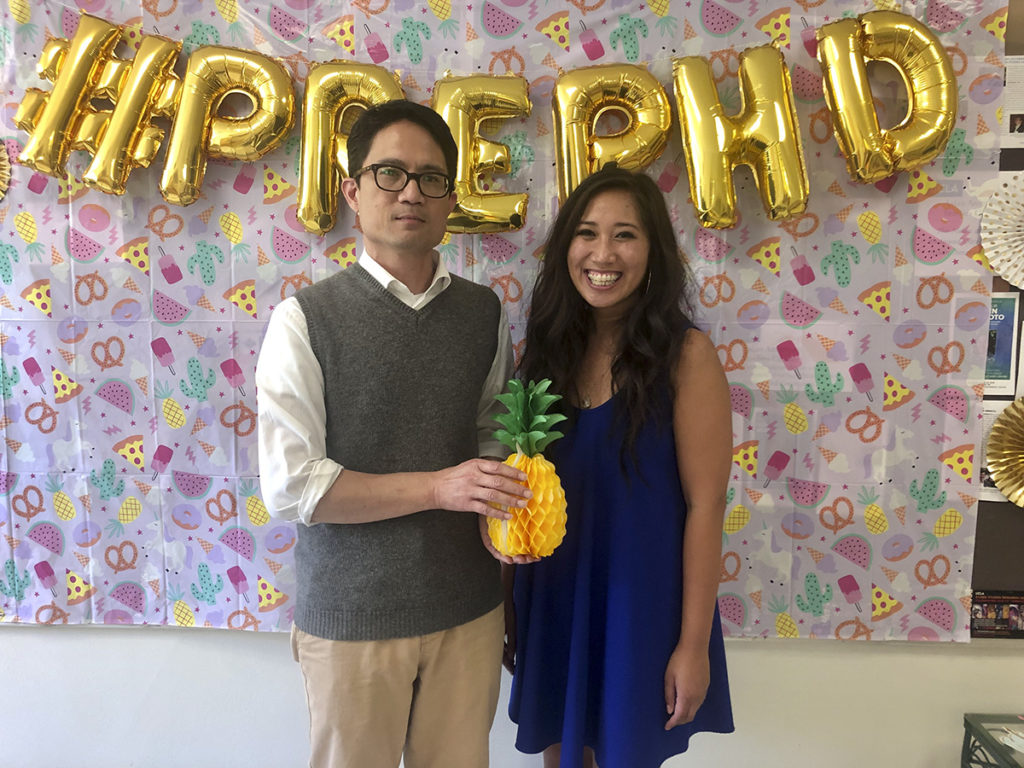(Firyal Bawab/Daily Bruin)
By Maddie Rausa
October 23, 2020 at 5:56 p.m.
Editor’s Note: In accordance with AP style, The Bruin refers to the Filipino community as “Filipinos” and uses “Pilipino” in reference to organizations or terms which have that spelling in their names.
Over the course of several decades, many Filipino Bruins have been united by a single cause: to develop Pilipino studies at UCLA.
The establishment of the Pilipino studies minor, which students can declare for the first time this fall, is one of many achievements Pilipino studies advocates have accomplished throughout the decades.
“When we think about the generational gaps, and the things that changed between generations, (an interest in Pilipino studies) is obviously something that did not change for (the Filipino) community at UCLA,” said Josephine Flores, the president of Samahang Pilipino, a Filipino cultural organization at UCLA and a fourth-year Asian American studies and psychology student.
The efforts of Samahang members, students, staff and faculty also contributed to other milestones, including the institutionalization of Pilipino studies concentration in 2009, Tagalog classes in the late 1990s and courses about the Filipino American experience in the 1970s and 1980s.
Establishing courses, 1970s and 1980s
When Casimiro U. Tolentino was an undergraduate student, he told his Asian Pacific America history professor that the course he taught only mentioned Filipinos in one lecture.
Tolentino, one of Samahang’s founding members, said his professor told him there wasn’t any more information on Filipinos available, and if he wanted to learn more about Filipino history, Tolentino would have to create a Filipino history course himself.
So, he did.
In Tolentino’s first year of law school in 1972, he taught one of UCLA’s first courses dedicated to Pilipino studies, called “The Pilipino American Experience in California.”
Books and articles about Filipinos were limited at the time, but Tolentino said he collected whatever information he could for the class. The first assignment of the class was for students to document their parents’ oral histories, he added.

Tolentino only taught the class for two quarters. Community activist Royal Morales started teaching the next similar class in the early 1980s. For the class, which was about the Filipino American experience, Morales took students on field trips to Filipino Town in Los Angeles, played music and told stories, according to a 2001 Los Angeles Times article.
The class became a rite of passage for Filipino American students at the time, said Enrique de La Cruz, who was the assistant director of the Asian American Studies Center from 1989 to 1999.
At one point, de la Cruz had to cap the class size because the amount of people enrolling grew year by year, he said. Morales, fondly dubbed “Uncle Roy” by students, retired from UCLA in 1996 and died in 2001.
As Uncle Roy’s course increased in popularity, Filipino students began to consider what else they wanted from UCLA beyond Asian American studies, de la Cruz said.
“At some point, … people said, ‘Wait a minute, what else can we do here?’” de la Cruz said.
Saving Tagalog classes, 1990s
Tagalog language classes, now called Filipino classes, came under the threat of discontinuation in the early 90s, said R. Bong Vergara, a member of the Pilipino Alumni Association. The UCLA Office of Instructional Development, now called the Center for the Advancement of Teaching, three-year grant for the class was scheduled to end in 1994, according to a 1994 Daily Bruin article.
With the looming threat of the cancellation, leaders of Samahang organized the Committee for Pilipino Studies, first called the Committee for Filipino Studies, Vergara said.
They changed the committee’s name in its second year, after Vergara became the director, because many Filipinos see the spelling with “P” as more empowering, he said. The “F” spelling is derived from the Spanish name of the Philippines, which originated in Spanish colonial times, according to the University of Hawai’i at Manoa Center for Philippine Studies.
The committee started a campaign to advocate for the continuation of Tagalog.

The committee used cultural events to raise awareness for Pilipino studies, including a procession through campus called Ati-Atihan, named after an annual cultural festival in the Philippines, Vergara said. Students, some in traditional Filipino attire, gathered to show support for the preservation of Tagalog classes, according to a 1994 Daily Bruin article.
“This was (the organizers’) brainchild,” Vergara said. “To use an existing cultural tradition and repurpose it as a tool for social activism.”
The committee also turned Samahang’s Pilipino Cultural Night into the “PCN-Other,” where they built discussions about ethnic studies into the script, Vergara said.
Pauline Yu, the then dean of humanities for the College of Letters and Science, said in an emailed statement she agreed to continue to fund the class beyond the three-year grant’s expiration after a meeting with the committee and other student activists in 1994.
Students can now take lower and upper division Filipino classes and use them toward a minor in Asian languages.
The committee dissolved in 1997 when Vergara graduated, but Samahang would pick up the initiative for Pilipino studies again in 2007.
Student activism often ebbs and flows from generation to generation, said Meg Thornton, who was a faculty advisor for the committee and is now the external affairs coordinator of the Asian American Studies Center.
Still, some generations of student activists have a dynamic that allows them to organize and accomplish what they set out to do, Thornton said.
Campaigning for the first certification, 2007-2009
In 2007, Samahang leadership decided to campaign for a Pilipino studies concentration within the Asian American studies major, said Joseph Felix, who led the campaign as the organization’s education coordinator that year.
Samahang leadership looked for a cause for Filipino students to rally behind and settled on the Campaign for Pilipino Studies because they thought it would appeal to students, Felix said.
But resources were scarce – Samahang had a small endowment and was dividing its team between various goals, said Michael de Vera, who was a leader of the campaign and Samahang’s education coordinator from 2008 to 2009. Along with the concentration, Samahang advocated for two members’ campaigns for student government seats and a referendum that would give the club more funding, he added.
Some members were worried about how the extra effort toward the concentration would affect their own goals, de Vera said. At one point, someone tore up the concentration’s proposal to the Asian American studies department, he added.
But even though tensions sometimes ran high, the concentration eventually gained momentum, de Vera said.
Samahang created a theme for the year, “Pave,” to put members in the right mindset for the difficult but important year ahead, de Vera said in an emailed statement. Through the concept, they thematically connected all of their coinciding interests, he added.
They also delegated responsibility by recruiting new members to committees, de Vera said in the emailed statement. Both strategies helped Samahang overcome the challenge of its strained resources at the time, he said.
“We definitely had nights of lots of coffee, lack of sleep,” de Vera said. “Especially towards the end because the timeline of these events were kind of parallel.”
Samahang reached out to various Filipino student organizations, such as PAA and the Filipino sorority Kappa Psi Epsilon, to prove the Filipino community supported the concentration, Felix said.

Samahang also hosted bake sales and other events to promote the concentration, de Vera said.
The committee for the campaign consulted Vergara and sifted through Samahang’s archives for stories about the committee and other Filipino community activism to make the proposal, Felix said.
“It made us realize that actually, this is not just one random idea we have,” Felix said. “This is actually rooted in history.”
Campaign members presented the concentration to the Asian American studies department chair and faculty in April 2009, de Vera said. Students stood outside the room to show their support, he added.
A few days after the meeting, the department officially approved the concentration.
Although he graduated before the department approved the concentration, Felix said it was exciting to be part of a longer history of advocacy.
Around the time of the concentration’s development, Asian American studies associate professor Lucy Burns considered the potential for a Pilipino studies minor. It was not until 2017, however, that Burns and her colleague, Kristine Jan Espinoza, began drafting the proposal for the minor.
Creating a minor, 2016-2020
The stars began to align for the Pilipino studies minor in 2016, said Espinoza, a former Asian American studies department student affairs officer.
The presence of supportive student leaders and administration coincided with an external review of the department which occurs every eight years at UCLA, Espinoza said.

Espinoza noticed the Pilipino studies concentration did not appear on students’ official transcripts and made sure students mentioned this to reviewers, she said. After the review, the Division of Undergraduate Education officially recommended that the Asian American studies department establish a Pilipino studies minor, she said.
“I don’t want to make it seem like it’s just good timing, it’s also years of activism,” Burns said. “But at the same time, we were in a position that we had the resources to do it.”
Espinoza and Burns got to work on the proposal in 2017, Burns said. Samahang also pursued the minor as part of the Campaign for Pilipino Studies.
Burns was a member of the Faculty Executive Committee, which gave her access to approved and rejected proposals for other minors, Espinoza said. Espinoza and Burns used these as models for their own proposal, she added.
They scoured the UCLA catalog for courses that would serve the purpose of the minor and were offered regularly enough, Espinoza said. They identified courses in anthropology, geography and other fields to make the minor interdisciplinary.
“We had so many crying, laughing meetings,” Espinoza said. “I was like, ‘What are we doing? Are we doing this right?’”
In community events called “meriendas,” named after the word for an informal snack time in the Philippines, they met with students and other faculty to discuss the minor proposal, Espinoza said.
The same faculty members from various departments who attended the meriendas submitted letters of support for the minor.
Some student groups, like Samahang, also provided letters of support for the minor. The Asian American studies department, Asian American Studies Center and Center for Southeast Asian Studies also backed the minor, according to Samahang’s Instagram post about the minor.
With several support letters, Burns and Espinoza submitted the proposal to the Asian American studies department, which approved it in 2019. After its approval by the Asian American studies department, the proposal passed in the Faculty Executive Committee and the UCLA Academic Senate Undergraduate Council and was approved by the Registrar’s Office in March.
On April 29, UCLA officially announced the Pilipino studies minor.
Like other communities of color, the Filipino community often takes up the advocacy of previous generations, said Natalie Bagaporo, who was the 2016-2018 Samahang president and one of the supporters of the minor.
“We inherit these things,” said Bagaporo, who is also a board member of PAA. “Whether it be from our direct predecessors, or from the community as a whole.”
The Filipino community’s mission to change UCLA at the institutional level is an ongoing effort, Burns said.
“The establishment of Pilipino studies minor isn’t about necessarily making it into the institution, but it’s about transforming the institution,” she added. “We are not here to maintain the status quo. We are interested in constantly changing the standards of the university.”
